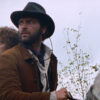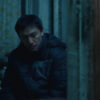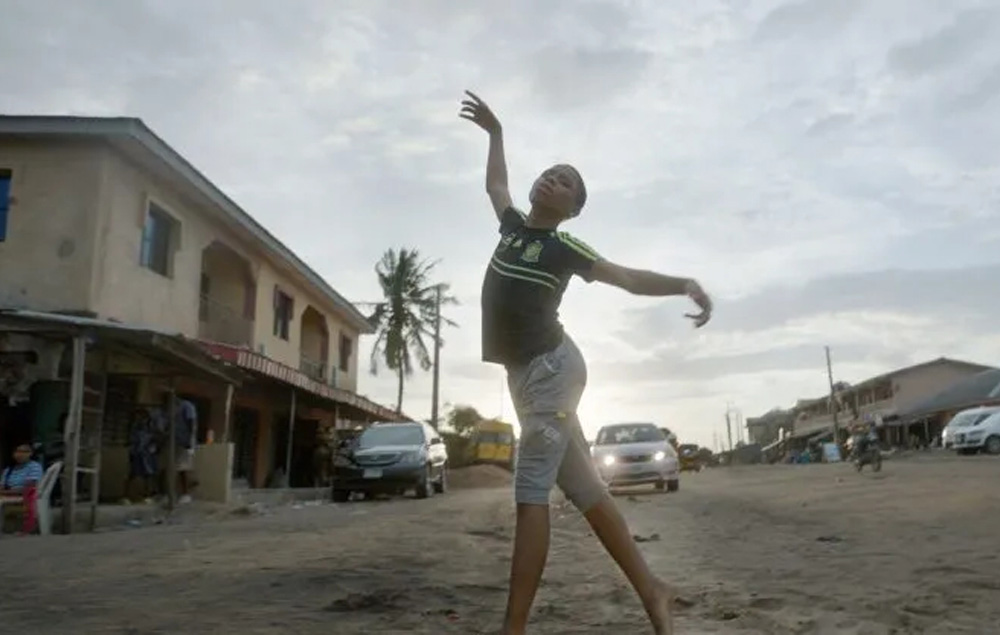It was only a matter of time before Matt Ogens would have a ballet dancer at the center of one of his films when a signature of his recent work has been how he’s able to so gracefully capture his subjects who are constantly on the move, from his Oscar-nominated short “Audible,” about Amare McKenstry-Hall, a football player at the Maryland School for the Deaf, to “Home and Away” where he used the gridiron as a way to tackle a trio of high schoolers whose dreams could be hard to envision with the U.S./Mexico border standing in their way as undocumented residents of El Paso. His camera pirouettes around Anthony Madu, a 13-year-old dancer in Nigeria, before the rest of the world starts to see him, setting the internet ablaze with a viral video of himself dancing in the rain and becoming sensation enough to receive an invitation to train at the Elmhurst Ballet School in England.
Along with co-director Kachi Nelson, Ogens ends up with a compelling story on his hands with “Madu,” not only when its prodigal subject’s instinctual choreography makes him captivating to watch in performances, but when he experiences little acceptance initially in both in his native country where he is looked upon with skepticism as he dances by himself in a corner as other boys play soccer and then even amongst peers at the dance academy where his Nigerian heritage makes him an outsider. Through the course of a school year, the film tracks how Anthony’s confidence has to work inward from the way he carries himself physically to the internal self-doubts that start to weigh on him, particularly when his health comes into question, and whether he has a place in the company at Elmhurst is of far less importance than if he can feel at home in his own skin.
Ogens and Nelson broke down barriers behinds the scenes in coordinating a cross-continental production and they observe Anthony start to overcome them in his own life, endearing himself to classmates as much with his personality as his skills and winning over those in Nigeria, including his devout religious parents, with his growing list of accomplishments. After premiering earlier this year at the Santa Barbara Film Festival, “Madu” will bow today globally on Disney+ and Ogens kindly spoke about how he was able to get to know Anthony before his online notoriety, filming spirited subjects as dynamically as they deserve and how being a documentarian really is being a constant student of life.
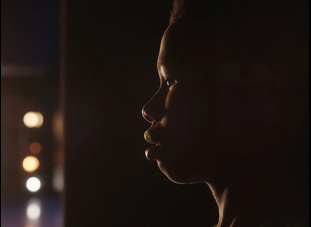
We did. My producer Jamie Patricof, who produced my first documentary “Confessions of a Superhero” and I’ve worked with on and off for many years, texted me the video one night. He found it online like anyone does, just tooling around, and maybe it had a few hundred hits, but it certainly hadn’t gone viral yet. And he knows me, so he knew I’d be very intrigued and probably jump down the rabbit hole and try to find the kid. And that’s what I did. This was probably a week before it went viral, and within a few days, I was in touch with Anthony and his family and Zooming with him.
And you have a co-director Kachi Benson. How did he get involved?
Every story is a different story, and I have always directed alone and told stories around the world and diverse stories and different cultures. You look at “Audible” from a couple years ago about the deaf community, and I look for what’s my connection to a story. For me, what this film is really about is acceptance and belonging [which] seems to be a theme of some of my films, because “Audible” was similar. But I did feel like even though I had filmed in Africa before, I had not filmed in Nigeria and it was such a particular place, I felt like I could tell a better story if I partnered with another director based in Nigeria. Together, we could tell a really beautiful story and combine forces, so I went down another rabbit hole of looking for and talking to many directors, and I stumbled upon this short VR film that Kachi had directed and connected with him. As you’ll see in the film, you don’t do ballet if you’re a boy in Nigeria. That’s why [Anthony’s] often ostracized or mocked or bullied, and choosing to be a documentary filmmaker is not typical in Nigeria, so in that way, Kachi really connected with Anthony’s story. He also happens to be from the same Igbo tribe in Nigeria, so that’s how it started.
It was intriguing to think that you became the people around Anthony when he leaves home to go to ballet school in England. Did that feel like a responsibility to take on?
Part of my process, and in this case Kachi and I’s process, is to spend a lot of time with the subject. We talked to Anthony and his family a lot and we got to know them. We ate in their home. We took walks around the neighborhood with him. So the process really starts early, and by the time we start rolling, the camera’s just an extension of him, and he forgets about it. He’s also someone that’s used to performing, so you throw a camera in a room with anyone, they know it’s there, but we didn’t feel it was a big distraction. Certain techniques we use, like if it’s a verite or an emotional scene, we’re hanging back for a while. We’re not going in for close-ups until that emotion is over, and we just do our best. And there was times where me and Kachi were outside the room, with our Comtek earphones on with a monitor, and it was just our DP hanging back in a corner shooting it.
But what you’ll also see I’ve developed over the years and what I brought visually to the film is making a film immersive. I spend a lot of time talking with the subject about how they see the world and how they feel the world, and that way I just become a conduit for them to tell their story. I’m interpreting that into a visual language into a film language with rules that we create, which might be different from the last film or the next one. But hopefully you see it’s actually not an observational film, [feeling as if it’s] behind the looking glass. There is no line between you and the spaces you’re in, but really it’s Anthony telling his story and his point of view and we’re just providing a safe environment for him to feel vulnerable.
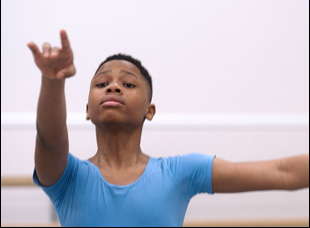
You know what? I never thought about that consciously, but I think you’re on to something, because whether it’s sports or, here, it’s dance, certainly it’s filmable, right? There’s something actionable that’s really beautiful, whether it’s dance, it’s sports, or it’s art. There’s something poetic in movement, and I love slowing that down and breaking it down for the audience.
It was interesting, especially after “Audible,” to see how you were able to largely tell that first section of the story in “Made” without words. Was silence something you were more comfortable with during that lonely part of Anthony’s journey?
To me, writing is not always about dialogue or voiceover. A lot can be said in silence. For example, you could have Anthony say, “I’m lonely,” or you could see him sitting on the edge of his bed looking out the window by himself and then you feel his loneliness, so I always lean towards being a little less on the nose and less heavy-handed with a subject telling you how they feel, but letting you feel what they’re feeling when it’s happening. And oftentimes anyone, but especially a 12-year-old boy, isn’t always conscious of their feelings or they can’t always verbalize it, so I just tend to think there’s more power in subtext and in a look than a word sometimes.
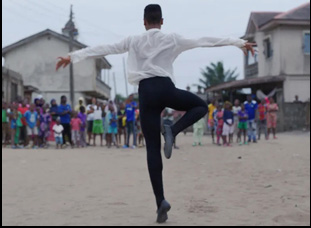
I don’t know if there was any one thing. I come in with curiosity, like I don’t know anything. I’m a beginner, and I always want to learn as a filmmaker. Those are my values as a person, so I’m there to explore and learn from them. It doesn’t matter their age. I learned [from Anthony] you can have dreams, and to be this kid where he comes from and be a ballet dancer and get out of his community is no easy feat for anyone, let alone a 12-year-old boy who doesn’t have a lot of friends because he’s a ballet dancer. And he showed me, and hopefully the world that you can execute your dreams. They might seem impossible, and there’s some unexpected obstacles that get in his way and challenges that are physical when he gets to England that I don’t want to spoil, but Anthony showed us that to pursue our dreams, no matter what.
Just as an experience for you, bringing together this cultural exchange, what was it like to see through?
I always say films are impossible — to get them financed and to get them made is really hard. A lot of people see the finished product, and a red carpet, and it seems glamorous, but to get it made from the idea to print, it’s really hard, just like it could seem for Anthony as a ballet dancer. Every film has its different challenges, and you grow and sometimes you think it’s not going to work and you keep pushing the rock up the hill, a couple steps forward, a couple steps back. We had teams on three continents, and directors and crews from two, and together I think we all came together to make something beautiful. It was really a collaboration of cultures.
“Madu” starts streaming on Disney+ on March 29th.

